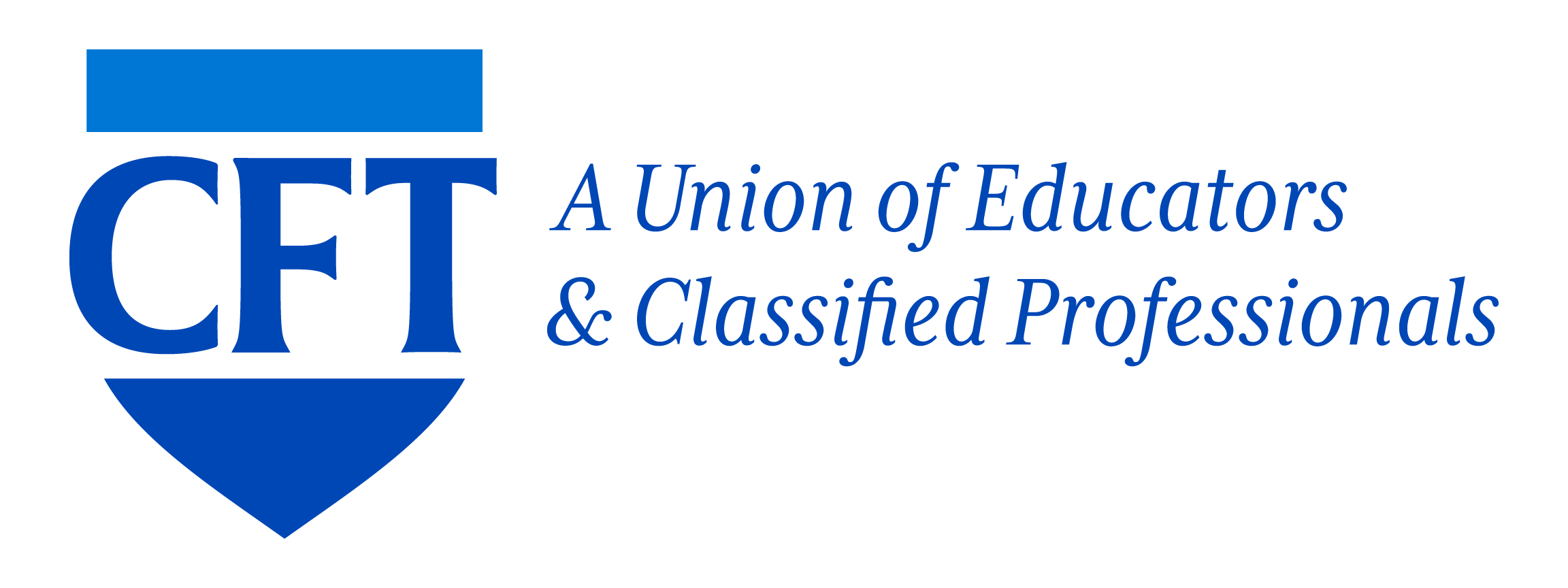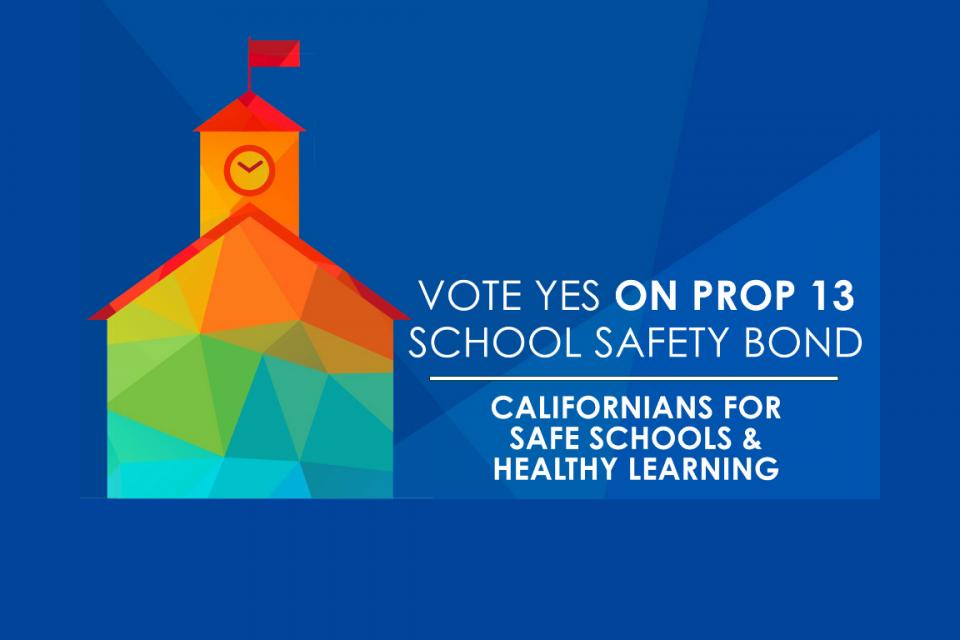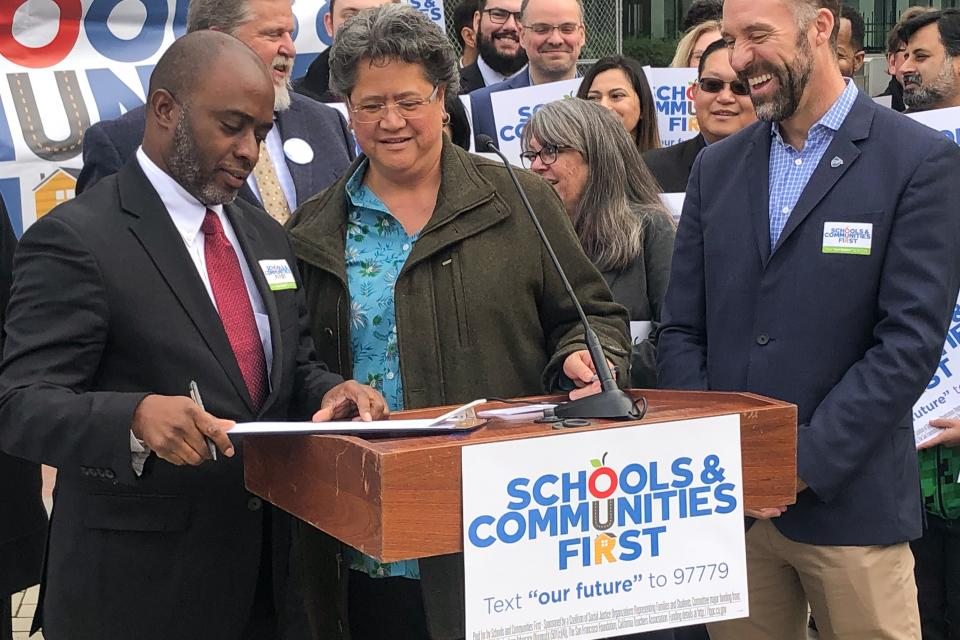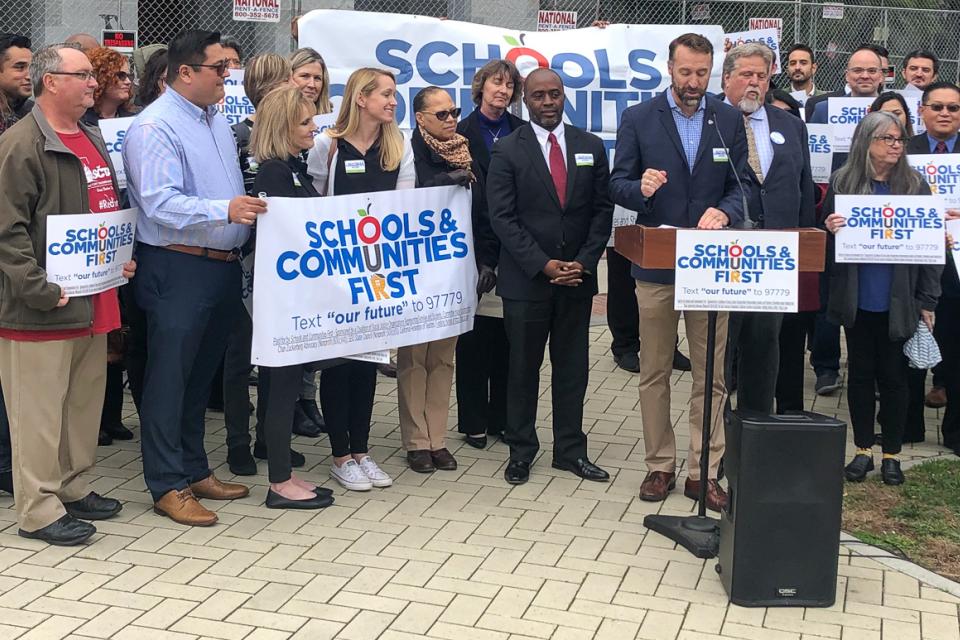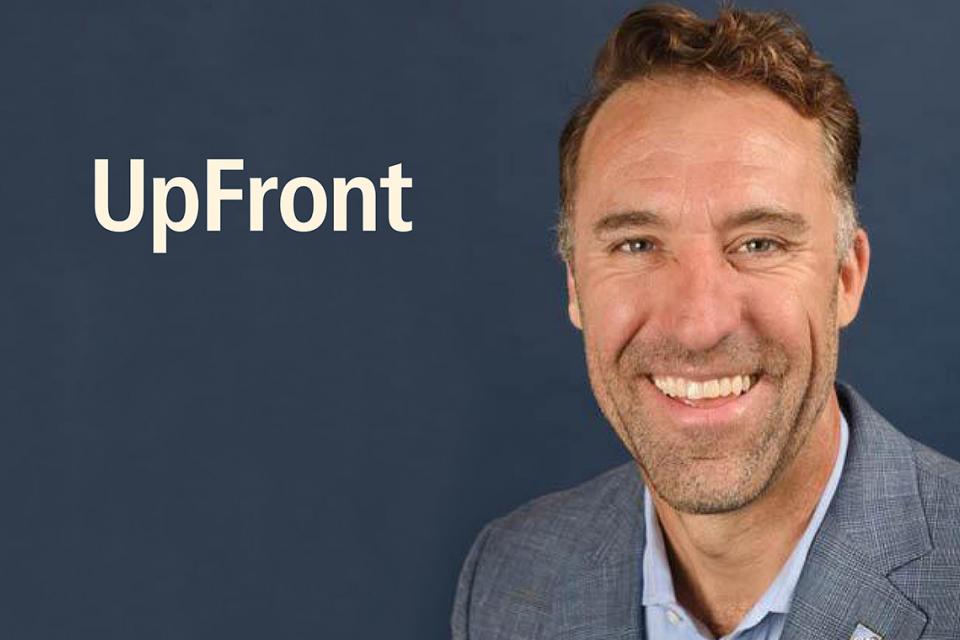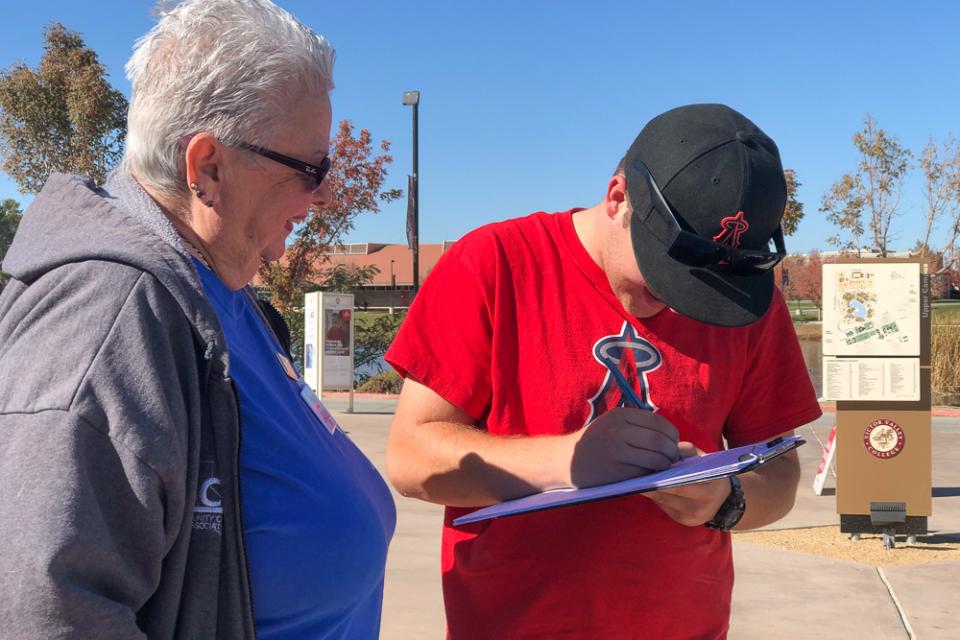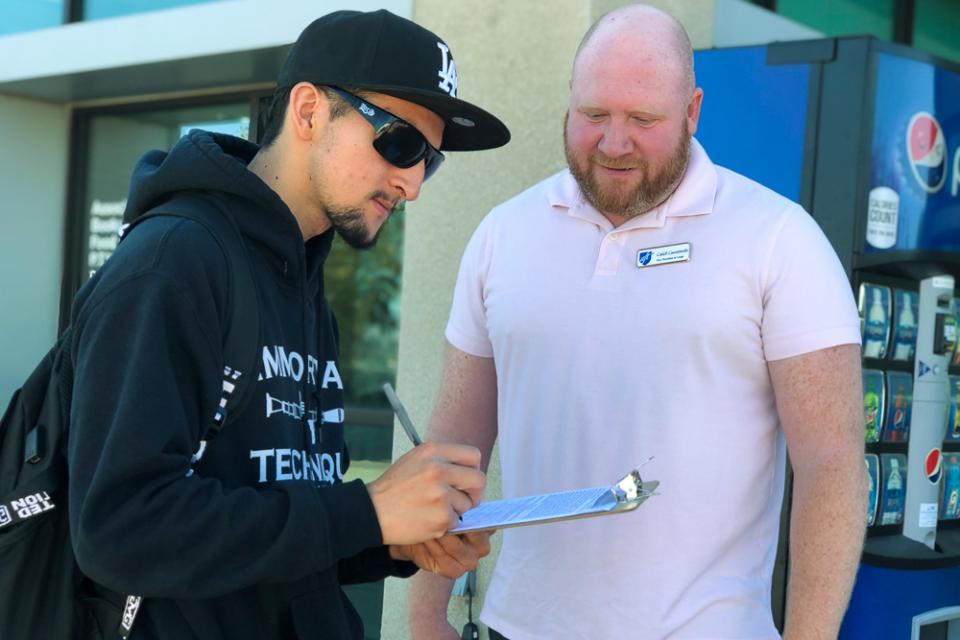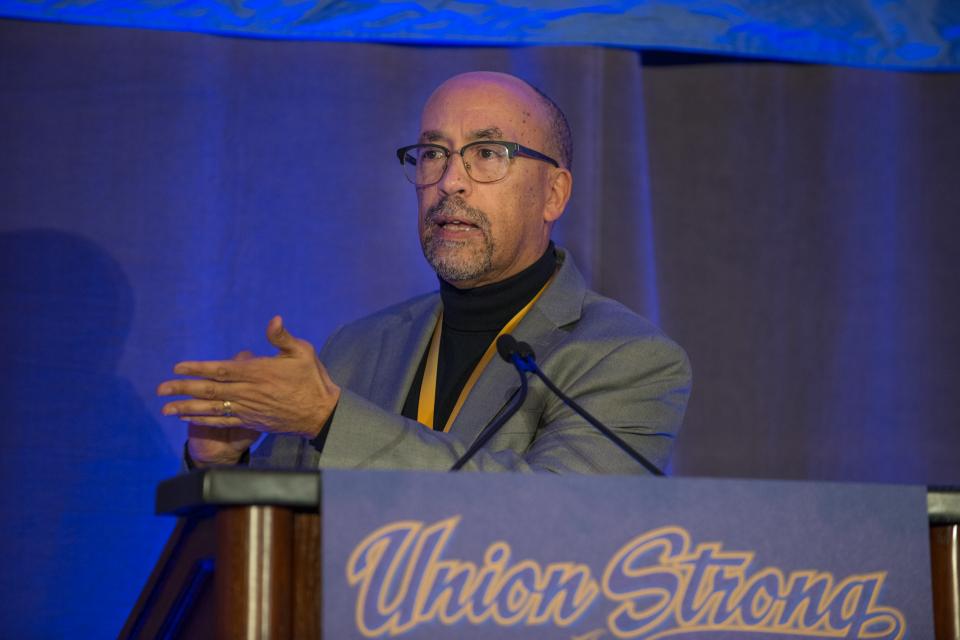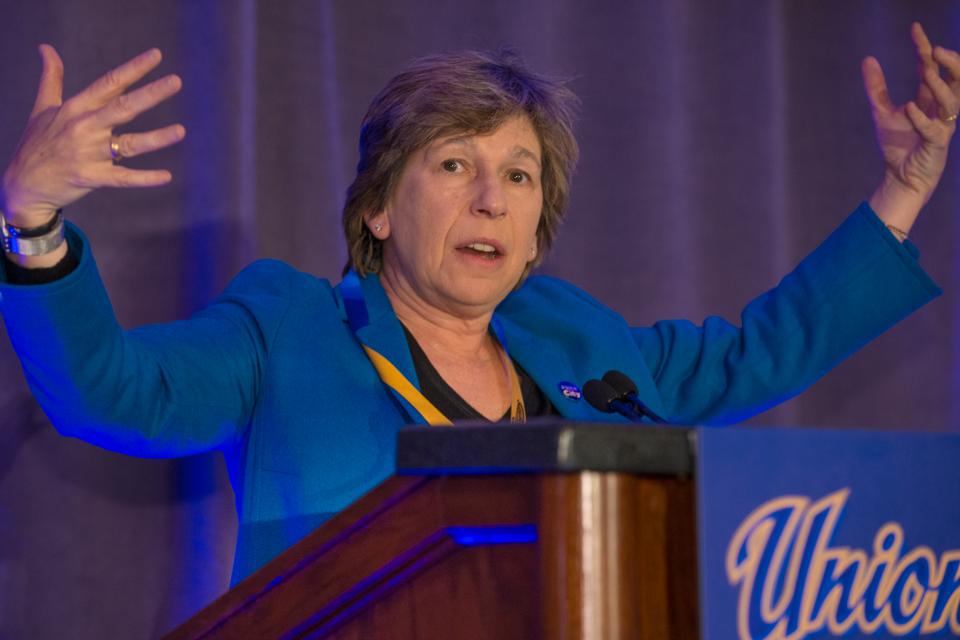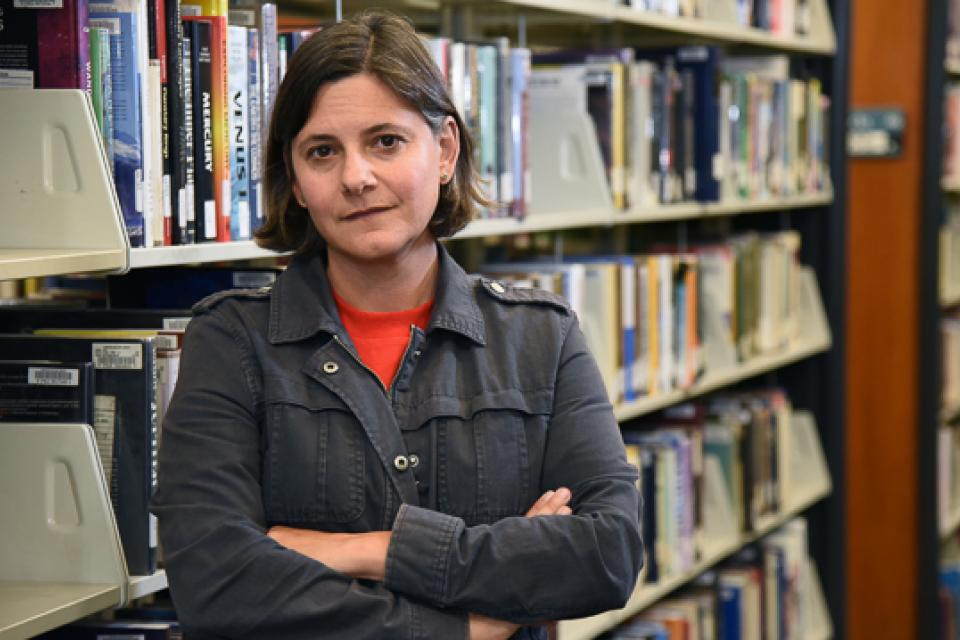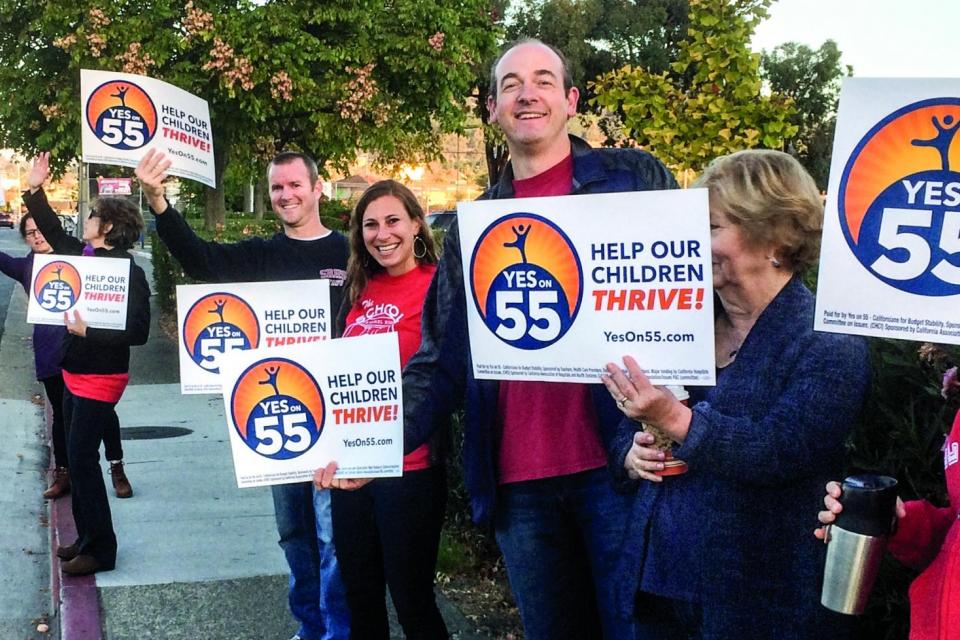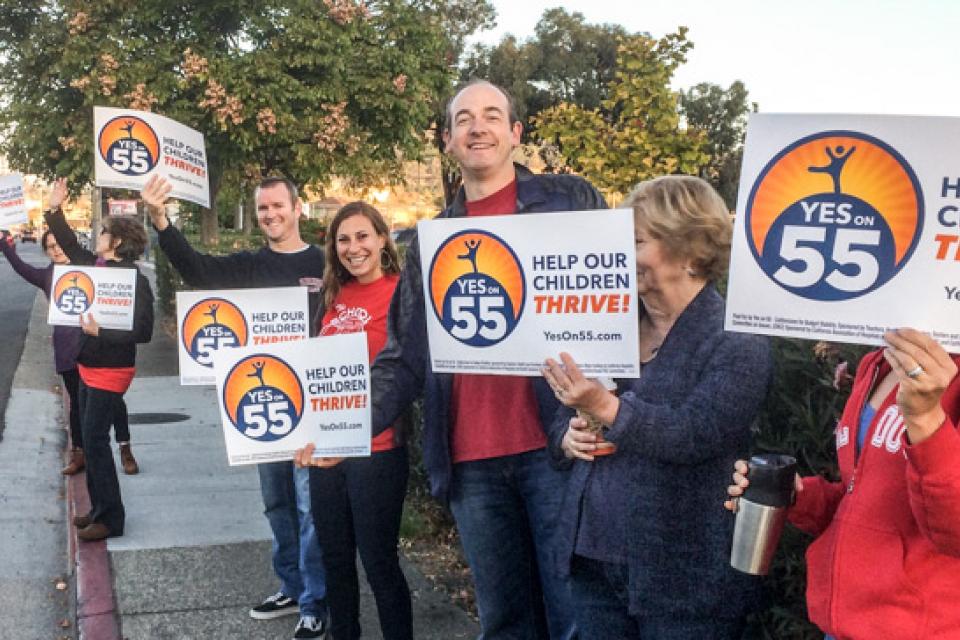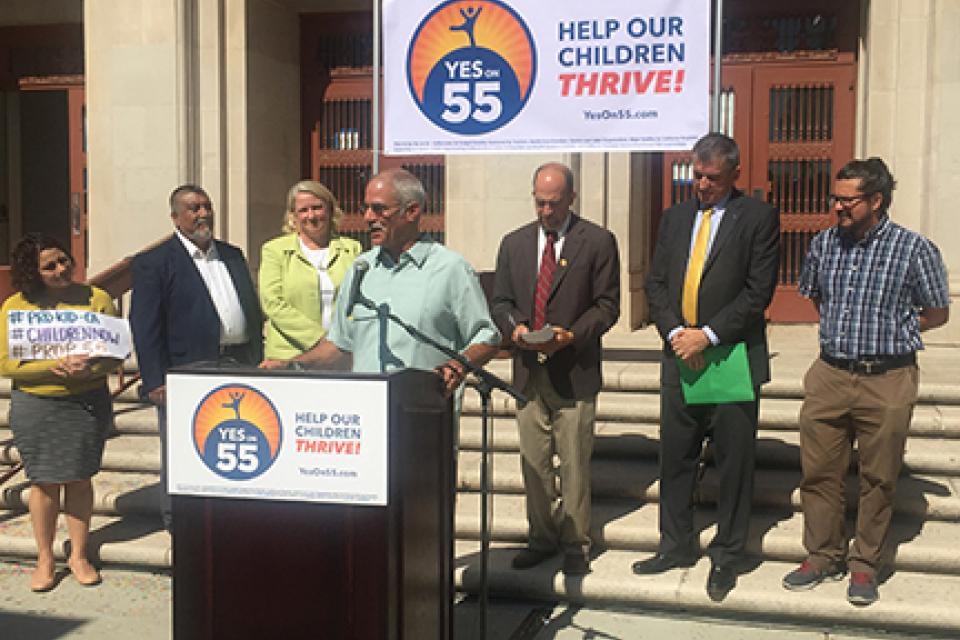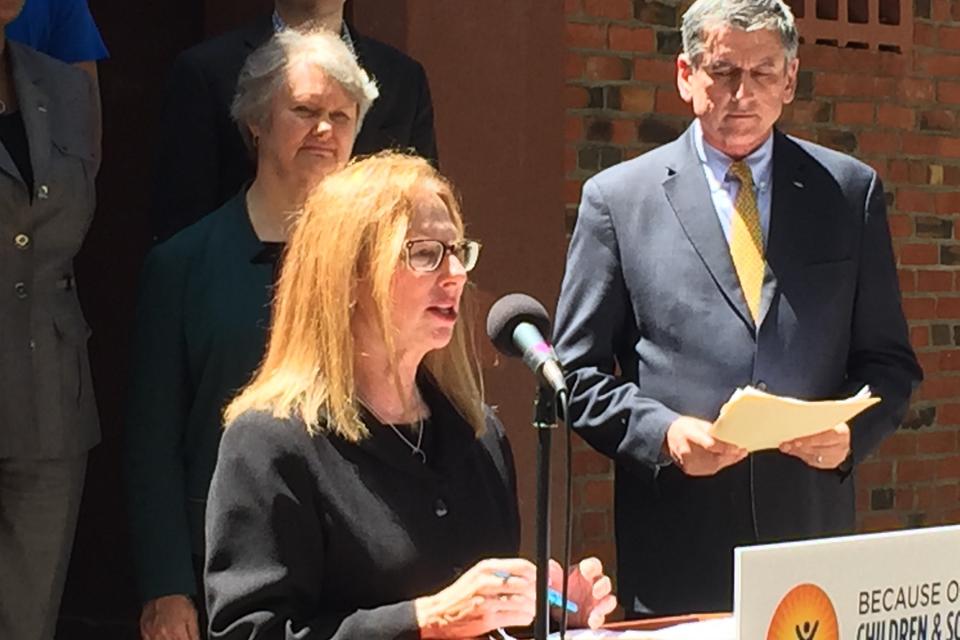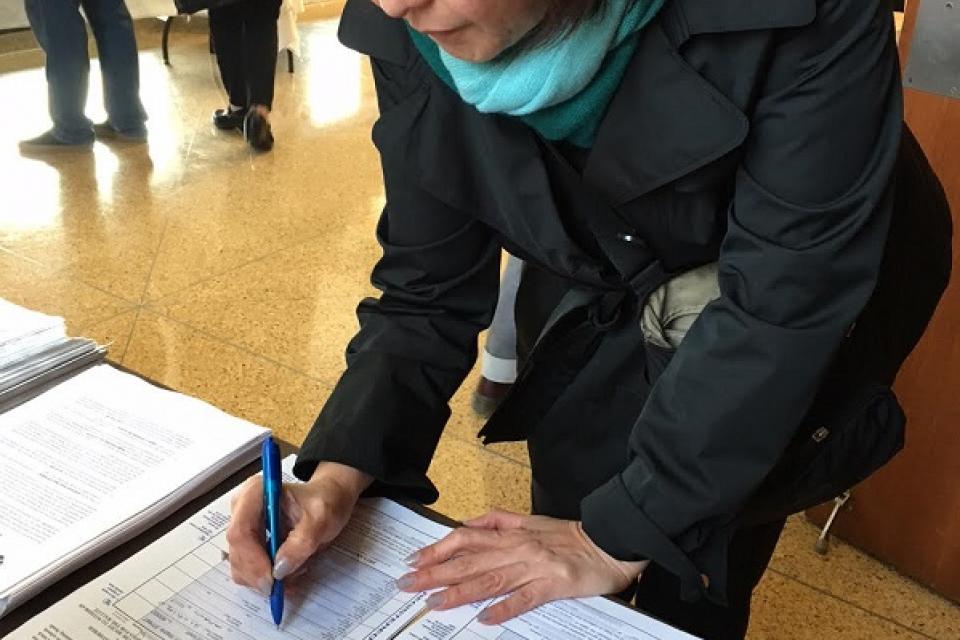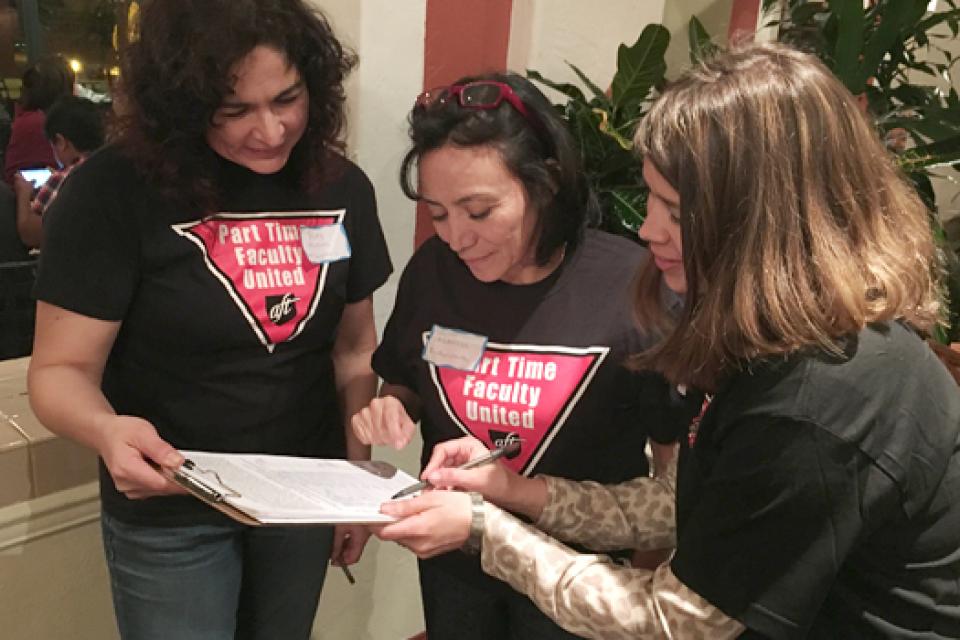Topic: Education Funding
Vote YES on Prop. 13, the California school safety bond
$15 billion for new facilities and modernization
Proposition 13, the School Safety Bond, will appear on the March 2020 California ballot. The initiative, which bears no relation to Prop. 13 from 1978, is the largest school facilities bond in state history, promoting adequate and equitable school facilities that will provide healthy, safe, and educationally appropriate school infrastructure for our children.
Tony Thurmond endorses Schools & Communities First
State superintendent of schools signs to qualify the ballot initiative
California State Superintendent of Public Instruction Tony Thurmond formally endorsed the Schools and Communities First initiative on January 28 before a crowd of educators, support staff, parents, and students on the south steps of the State Capitol .
Our bold step forward to fully fund public education
Schools and Communities First initiative
By Jeffery M. Freitas, CFT President
When CFT received the first batch of petitions to put Schools and Communities First initiative on the ballot in late October, I immediately ripped a box open and took out a form. I eagerly signed the fresh new document to add my name in support of this historic initiative.
Put Schools and Communities First on the ballot
Join CFT members in gathering signatures
The California Schools and Local Communities Funding Act will restore over $12 billion per year to California’s schools, community colleges, health clinics, and other vital local services.
For nearly four decades, big corporations have not been paying their fair share of commercial property taxes, leaving California with the most overcrowded classrooms in the United States and with some of the worst ratios of counselors, librarians, and nurses per student.
Creating a movement for charter reform and education funding
Up Front
WATCH THE VIDEO: State of the Union 2019
By Joshua Pechthalt, CFT President
As the school year begins to wind down, our work ramps up. CFT is joining other education unions to push hard to enact bills calling for more charter school transparency and accountability, bringing the decision-making on charter authorization exclusively to the district level, and more ambitiously, enacting a moratorium on all new charters. As Los Angeles state Sen. Maria Elena Durazo, the author of the moratorium bill explains, it’s time we put a “pause” on new charters.The effort to bring reform to charters importantly parallels the AFT Fund Our Future campaign that is investing in education.
Convention speakers inspire through historic perspective
Reverse the damage of Prop 13 and build union strength
WATCH THE VIDEO: Jackie Goldberg
WATCH THE VIDEO: Bill Fletcher, Jr.
Former teacher and Assemblymember Jackie Goldberg welcomed Convention delegates to Los Angeles on March 22 and recounted an important history in the CFT’s 100th Anniversary year. She talked about the need to reverse the damage of Proposition 13.
Students need more mental health support on campus, faculty too
By Mia L. McIver, President UC-AFT
In a recent survey of UC-AFT faculty, members highlighted mental health as an issue that deserves our union’s attention and energy. UC students experiencing psychological challenges often seek support from lecturers and other contract faculty, who are sometimes the only faculty with whom they can develop a one-to-one relationship.
Sometimes you win, sometimes you lose…
Online college and student performance-based funding
By Jim Mahler, President, Community College Council
After a very long, hard fought battle beginning in January and ending in June, we lost our struggle against the governor regarding both the Online College and the Performance-Based Funding initiatives.
In case you weren’t already aware, the governor wields a lot of power, and, believe it or not, these two initiatives were at the top of his agenda with respect to the budget for the entire state of California!
New funding formula risks turning colleges into diploma mills
Stephanie Rosenblatt, president of Cerritos College Faculty Federation, and a librarian at the college, has seen what happened to counselors in her district when performance metrics were imposed on them.
Speaking about the school administration officials, Rosenblatt said, “They want to game the system – they don’t care if it’s quality counseling – they just want a bunch of education plans. The education plan is supposed to be the artifact of an important conversation, but they just want to check off these productivity measures,” she said. “Our counselors have master’s degrees and some have PhDs – they went to school for student contact, not to be chained to their desk all day, writing education plans.”
Republicans win – Democrats lose in community college funding proposal
By Jim Mahler, President, Community College Council
It’s taken for granted these days that as far as state budget decisions go, Republican legislators are bystanders, while the Democratic supermajority makes the major fiscal decisions.
However, Republican lawmakers and their constituents have new reason to celebrate, as far as California Community Colleges go, if Gov. Brown gets his way and the proposed new community college funding formula becomes law.
When educators can’t afford to live where they work
Housing crisis hits teachers and staff in urban and rural areas
Last year, Veronica Juarez, a peer education coach and middle-school teacher in San Francisco for more than 20 years, was living in the city with her mom and two kids. Now, after an owner move-in eviction, she and her 10-year-old son, Rio, are living in a couple rooms and limited kitchen access. Her mom moved back to Mexico, and her daughter, in college at Long Beach, will stay there.
Bilingual education back in national spotlight
Where will we find enough multilingual teachers amidst shortage?
Last November, California voters passed Proposition 58 — the Language Education, Acquisition and Readiness Now initiative, or LEARN — by the largest margin of any measure on the ballot.
Today, the CFT and community organizations are working with state education officials and local school districts to revive and update bilingual programs mothballed after voters passed Proposition 227 in 1998.
State Education Budget: Highlights and lowlights in governor’s initial proposal
On January 10, Gov. Brown released his proposed budget for the 2017-18 fiscal year amidst uncertainty about how federal actions may impact California. Federal funds currently account for more than one-third of the state budget, and according to the California Budget & Policy Center, 7.9 percent of federal dollars currently go to K-12 education and 5.2 percent to higher education.
We can’t afford to go back – Proposition 55 sails to victory
School and college funding secured
In a crowded field of 17 propositions on the statewide ballot November 8, voters clearly saw the value of publicly funded education and passed CFT’s top priority, Proposition 55, with an impressive 24-point margin.
Top priorities Propositions 55 and 58 sail to victory in 2016
In a crowded field of 17 propositions on the statewide ballot, voters clearly saw the value of publicly funded education and passed CFT’s top priority, Proposition 55, with an impressive 24-point margin.
Prop 55 will ensure continued funding for schools and community colleges at the rate of roughly $8 billion a year by maintaining the existing income tax on the wealthiest Californians through 2030. Victory on Prop 55 was critical, and now districts and unions will be able to determine spending without the fear of layoffs, program cuts or eliminations, or student fee increases.
Yes on Proposition 55: We can’t go back
What difference has Proposition 30 meant for public education in California?
A deluge of March 15 layoff notices removed one in 10 teachers from K-12 classrooms between 2008 and 2011. In Watsonville, Pajaro Valley Unified sent 158 notices in 2010-11. And this year? None.
CFT leaders help launch Prop 55 campaign
Supporters of Proposition 55, including educators, elected officials, parents and other community representatives, held a press conference in front of Hamilton High School in Los Angeles on August 15, kicking off the local campaign for the ballot initiative that will protect schools and students from losing up to $4 billion per year.
Campaign kick-off for Prop 30 extension, now Proposition 55
On May 11, in front of Sacramento’s California Middle School, leaders and members of unions and community groups stood before a large group of reporters and announced that the coalition they belonged to had just turned in more than a million signatures to place the “California Children’s Education and Health Care Protection Act” (now Proposition 55) on the November state ballot.
Prop. 30 extension qualifies for November election
Campaign to keep public education funded kicks into high gear
On May 11, a coalition of unions and community groups announced that it had submitted more than a million signatures to place the “California Children’s Education and Health Care Protection Act” on the November ballot to continue the funding benefits of Proposition 30.
State budget: Governor says voters need to renew Prop. 30 extension
How does the May Revision stack up for educators?
Gov. Brown made it clear in his May Revision that unless voters renew Proposition 30 in November, California will have to make budget cuts in future years.
